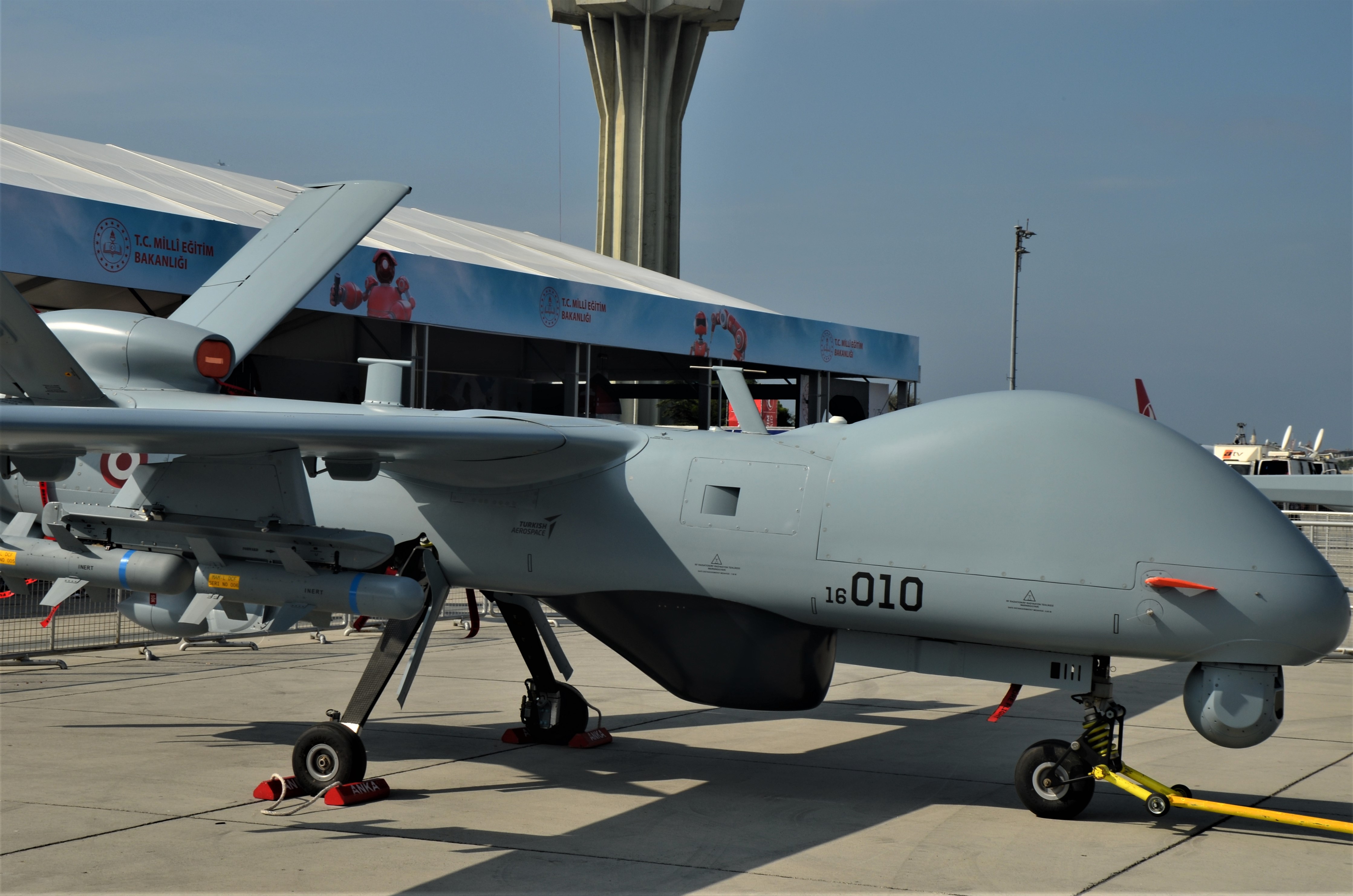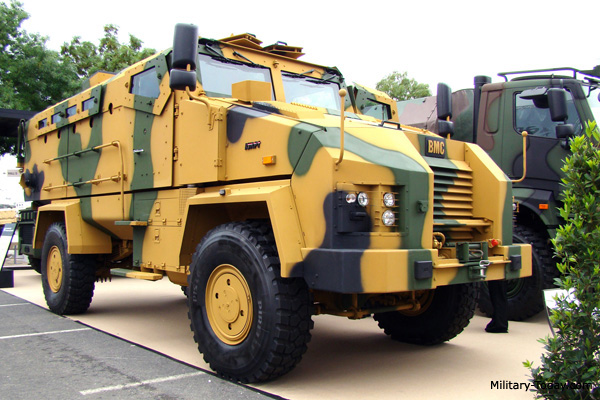CAIRO – 2 July 2020: Being a NATO member, Turkey easily acquired defense technology from fellow members and their allies, and was even able to produce some parts and assemble certain arms. Nevertheless, it used such edge – particularly UAVs (drones) –to intervene in Arab countries like Syria, Libya, and Iraq.
Military Affairs Researcher at the Arab Forum for Policies Analysis Mohamed Al Kenany tells Egypt Today that Turkey had been planning to manufacture combat drones in the 1990s through Turkish Aerospace Industries (TAI). At the time, the country possessed American and UK drones, and began producing mini-drones early in the 2000s.
"The real start was in 2010," Kenany explains saying there has been a wide cooperation between Turkey and Israel in the aviation industries sector as well as smart ammunitions technology.
"That's how Turkey earned accumulated experience pertinent to the software and engines," the researcher clarifies pointing out that a company dubbed Tusas Engine Industries (TEI) was founded in 1985 as a joint venture between TAI and General Electric to Co-assemble / manufacture components for the F-16 engine.
Tusas produces the engine of TAI Anka UAV used in Libya. The vehicle - worth $8 million - is a long-altitude and long-endurance drone that can fly up to 24 hours. The engine is originally developed by Thielert of Germany which was acquired by state-owned Aviation Industry Corporation of China (AVIC). An Anka drone was once downed in Libya, the military affairs researcher says.

TAI Anka UAV
Yet, the drone that has been widely used in Libya and also in northern Syria is Bayraktar TB2 as it is cheaper and lighter. The value of such vehicle is $5 million. "Bayraktar TB2 can carry ammunition weighing 55-155 kilograms. It can fly on an altitude that is medium to high, and has an endurance of 24 hours. It is an armed tactical vehicle that started out as a reconnaissance gear. Its engine was originally designed in Austria by Rotax," Kenany clarifies.
Turkey also has the TAI Aksungur drone, which is a high-endurance vehicle that can fly for up to 40 hours, and has six hardpoints for weapons.
Furthermore, the country has been using in Syria and Iraq T129 ATAK helicopters - co-developed by TAI and Italian Agusta Westland (now Leonardo Helicopters) - and F-16 jets. "However, the reliance has been heavily on UAVs given the shortage in pilots that existed before the attempted coup in 2016, and severed in its aftermath due to the detention of a significant number of pilots," the researcher underlines.
"The use of drones is more suitable in Libya as it convenes armed groups. Also, the arming of the Libyan National Army (LNA) and Tripoli militias is not advanced," Kenany explains.
"Turkey currently works on Bayraktar Akıncı having a Ukrainian engine. It is designed to fly 12,000 meters above sea surface, and to carry cruise missiles as its external payload capacity is 950 kilograms while its internal payload capacity is 400 kilograms," the military affairs researcher points out.
"The missiles used by Turkish fighter jets and drones are mainly made / originated in the United States and Israel, while the engines are originally designed / manufactured in the United States, Germany, France and Ukraine " Kenany highlights.
It is noted that Roketsan – Turkish company - produces two types of missiles used mainly by helicopters and drones. Those are UMTAS and MAM-L.
It is noted that the United States did not fulfill Turkey's request to acquire the Patriot air defense system, although it does not possess an air defense system that can deter high-maneuver and advanced fighter jets. The existing one (Hawk System) is effective with less advanced generations of fighter jets.
Turkey has developed short and medium range defense systems that have not entered service yet. The short-range system is called HISAR-A and has a range of 15 kilometers. The system is supposed to enter service by the end of the year or in 2021, according to official statements. The medium-range system is called HISAR-O and has a range of 25 kilometers. The system is supposed to enter service in 2021 or 2022.
"In March, [Turkey] made statements it will deploy HISAR-O northern Idlib. But, probably, those are just for propaganda," the military affairs researcher, Mohamed al-Kenany, explains.
The systems were developed by Roketsan in collaboration with Aselsan.
Turkey resorted to Russia to get the S-400 air defense system, incurring its dismissal from the F-35 program. Despite of its receipt mid-2019, Turkey has not been able to operate the S-400.
CAIRO - 27 July 2019: Since its receipt by Turkey earlier this month, the Russian S-400 missile system has triggered a strong response by its fellow NATO member the United States. Although the measures taken by the latter incurs big losses to the former, Turkey insists on its decision.
On land level, Turkey's main gear has been BMC Kirpi, which is a mine-resistant ambush protected vehicle. "BMC Kirpi has been used in northern Iraq and northern Syria. It's initially an Israeli technology known as Hateh of Navigator," the military affairs researcher clarifies.
"A larger number of BMC Kirpi vehicles was sent to Libya, and the majority were either destroyed or confiscated by the LNA," Kenany says.

BMC Kirpi
"As Turkey has been participating in NATO's Sea Guardian operation that has started inNovember 2016 to counter terrorism and support maritime situational awareness central andeastern the Mediterranean, it has been performing so-called air exercises to secure the flights carrying Syrian mercenaries into Libya," Kenany showcases. He added that officers not paying allegiance to Turkish President Recep Tayip Erdogan are being sent to Libya, which is a hostile area, so that if they get killed, he would be getting rid of them.
"Turkey doesn't send main armed forces or combat platforms to Libya because it's a hostile zone, and because of the far distance, which requires high-cost logistic support," Kenany clarifies.
"The United States is not comfortable about Turkey sending mercenaries into Libya as that would create groups like Qaeda and the Islamic State (IS)," the military affairs researcher says.
Kenany points out that Turkey is jeopardizing NATO in three ways. One is proximity with Russia and purchasing arms from it. Second is its "military adventures" in the region. Third is its conflict with Greece over gas eastern the Mediterranean which creates a room for Russia to mediate and increase its influence. The military affairs researcher speculates that NATO would support any rebellion against the incumbent Turkish regime led by Erdogan.
Turkey has three goals in Libya that are taking over oil and gas resources, reconstruction contracts, and terrorists recycling. Kenany says that Turkey attempts to infiltrate militants into CEN-SAD countries, and then sell such states Turkish arms whose sales recorded in 2019 $2.7 billion. That is why Egypt launched the CEN-SAD anti-terrorism center in Cairo.
The reason the militias affiliated to the Government of National Accord (GNA) backed by Turkey attempt to enter Sirte and Al Jufrah is that Sirte is the portal to Oil Crescent while Al Jufrah has a main airbase. "If Turkey puts its hand on those, it will blackmail NATO and Egypt," the military affairs researcher stipulates.


Comments
Leave a Comment